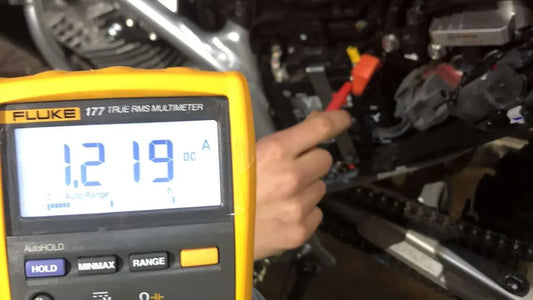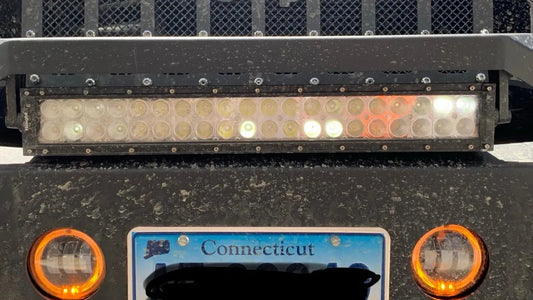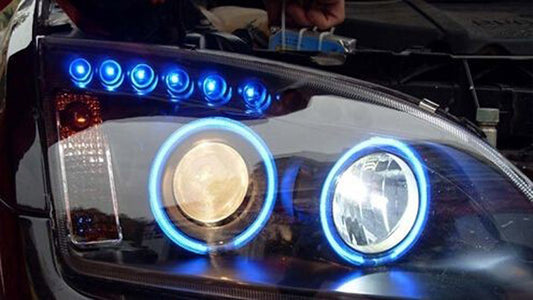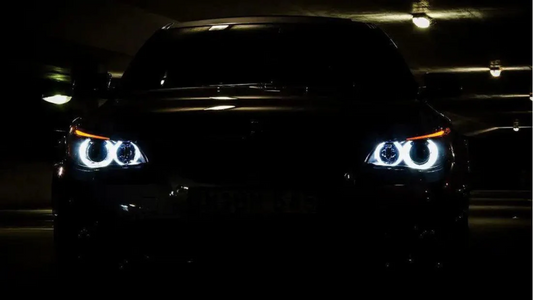What size wire should I use for my LED light bar
This is not a complicated situation because the LED lighting system is very simple. No need to complicate the system because it only requires a certain amount of current or electricity. You can use any wire you can find.
But it's not done yet. To find the right size wiring for your LED light bar, you must know a few things.
Before you proceed with your selection of wires, you must know that there are two types of wires, such as stranded wire and solid wire.
Solid wire - This type has a solid conductor. It's basically copper, with plastic insulation around the conductor.
Strand wire - This type has more than one conductor. In fact, there are several conductors and insulating sheathing in a particular bundle.
However, if you choose a stranded wire, you must know that it is flexible but a little complicated to deal with. In order to attach it, you must consider doing some welding to harden it.
Solid wire is more flexible and comfortable than strand wire. You can connect with this wire effortlessly.
In summary, you can use both wires for LED lighting, but if you don't want to spend too much time, choose the solid wire, which is easy to use.

What is a wire gauge?
This is very important because if you don't choose the right meter, your system may not be as successful as you assume. Therefore, be sure to find the perfect meter that fits your wiring system - a larger meter is a better choice.
But the bigger one has some problems. You may encounter difficulties when terminating, and they are not easy to deal with because they are not flexible enough.
The good news is that you don't need a big wire because LED lights don't need much current.
When selecting a wire, it is very important to check the AWG name. So AWG stands for American Wire Gauge, which is to check the connection speed. Interestingly, this figure mentions the size of the wire.
If the number is small, the wire is large. For example, 16 gauge wire is smaller than 14 gauge wire, and 12 gauge wire is bigger than 14 gauge wire.
What should we consider when choosing wire?
The two things you must consider when choosing a wire are the current load and the voltage drop.
Although copper is considered an ideal electrical conductor, it has several innate problems. The longer the cable, the greater the resistance in the circuit. To measure this resistance, we use ohm.
As the wire gets thinner, the resistance increases. This happens because it is very small for the area over which the electrons flow.
As the resistance increases, you will experience a voltage drop. For example, if you have a small wire of reasonable length, you may need to deal with a voltage drop from 36 volts to 34 volts.
When you encounter periodic changes in the voltage system, it may inadvertently generate a higher level of current consumption. Therefore, you must check the correct wire gauge before considering length or size.
Another important factor to consider is the capacity of the wire. You must check and make sure that the wire you are using is capable of managing the amount of electricity that passes through it.
If you use thin wire, it can get hot due to resistance and can be quite dangerous, which will cause the sheath wrapped around the wire to melt. Even worse, it may cause a fire.

A higher percentage of home LED settings include short wires. In addition, they are managed in series, so they require only very low current. You can use thin wires easily, but if your interest is installing many lights, we recommend thinking twice before considering thin wires. It requires a lot of power and may have to go through the wires you decide on.
So be sure to look at ways to handle various wire gauges.
A step-by-step guide for determining the correct wire gauge
Check and calculate the length of wire required for connection, such as the LED light bar.
Once that's done, find the current the wire can handle. You can do this by calculating the length of the LED light bar connected to the power supply.

Once you get that number, you have to multiply it by watts per foot. For example, if your LED lights probably consume 5.5 watts per foot, and you plan to use about 14 feet, then you have to multiply 5.5 by 14 to get 77 watts.
After that, you must divide the total wattage calculated in the previous step by 12. In this way, you will get the current or the total amperage. That means 77 watts divided by 12, i.e., 6.416 amperages.
You can view the following table for the appropriate wire gauge. You get the answer at the intersection of feet and amperage. For example, for 40 feet and 10 amps, the appropriate wire gauge is 8.
Remember, the current is consumed by the wire itself. That's why it's important to make sure you use thick wires when using long ones. The scale mentioned below shows a lower number indicating a thicker wire.
Wire gauge and size
Many appliances and household lighting fixtures require around 12 or 14-gauge wires. This requirement is referred to as a number, a dash, and another number. For example, it would look like 14-4 or 14/4.
The first number is the diameter of the wire, while the next is the number of wires in the cable. Sheathed wiring harnesses are the cables mentioned here, usually covered with plastic insulation.
Wire color coding
It is best to consider another criterion, namely the color or insulation of the cable or wire casing. The color will help you identify the internal packaging wires.
Red or black insulation indicates hot wires or live wires inside.
A brown or white lid means you will find a neutral wire.
A yellow/green or yellow shell indicates a ground wire inside.
Keep in mind that electricity or current can pass through neutral wires, so care must be taken when handling them. You must turn off lights or circuit breakers before handling any installation.
You may often be advised to use 18 gauge solid core wire. If you're thinking about cost, the difference between this cable and a smaller cable isn't that big.

If you want the wire to match the terminal or bracket, then the size 18 gauge can be made larger, as you have hinted. This particular wire size can handle higher than the average system you have.
FAQ
Q1: The Lightbar is: The New Vision 7200 lumens, 72 watts, and 13.5 inches long. What size wire should I use?
A1: When we think about wire size, it's pretty simple. The 16 gauge is a car wire that is large enough to support 6 amps, given the distance of the wire you will be running.
Or, if you prefer a larger wire size, consider using a 14-gauge wire gauge.
Q2: Is a relay required between the toggle switch and the battery?
A2: If you're worried about the relay between the toggle switch and the battery, we'll help you out. Obviously, the light bar will only consume 6 amps of current, which is not much, whereas a switch can handle 20 amps of current.
As a safety factor, you will use switches at less than half the designed load capacity. Therefore, no relay is needed.
Q3: What is the current of the LED light bar?
A3: 72-watt LED light bar, current 4.2A@12V, 21.A@24V. This is the ammeter specification for our standard two-row LED light bar.
You can find more details below these articles:
1. How many amperes does the led light bar consume
2. Fuse sizes for 12v LED lights: Use and Prevention
4. My light bar has completely or partially stopped working
5. How to choose the best LED light bar for your vehicle
6. How to Wire a Light Bar with a 5 Pin Rocker Switch
7. Best placement for auxiliary LED lights
8. Why do you need a harness kit for Off-road LED light bars
9. How many watts of good LED light bars are suitable for car use









